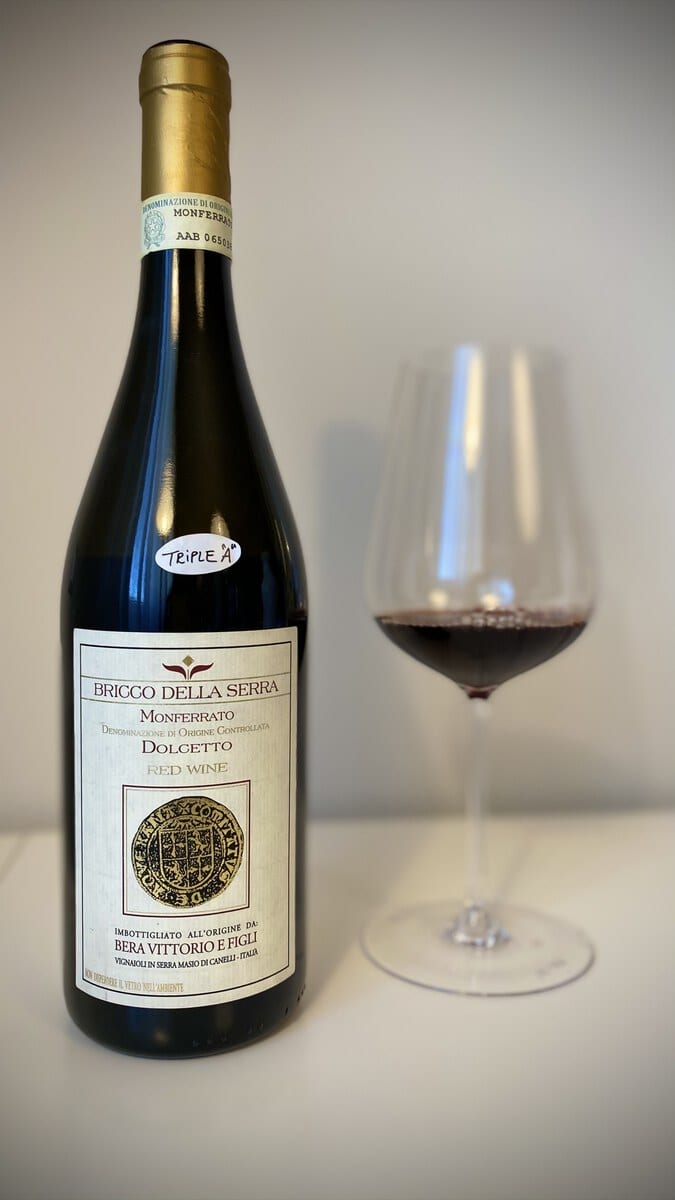Bera Vittorio & Figli "Bricco della Serra" 2010
100% DolcettoMineral and evolved. Leather, tobacco leaf.
Tasting Notes
The Bricco della Serra 2010 is garnet colour with orange hues.
The nose is very evolved and mineral. I find leather, cedar wood, tobacco leaf, dark chocolate. There is some faint dry violet and under-spirit cherry too.
The mouthfeel is light, thin almost and show some acidity and fine tannins. On the palate I find again the minerality and some delicate toasty notes. The wine is definitely more layered on the nose than it is on the palate.
The finish is medium.

How it's made
Organic wine. Clay and marl limestone soils. Harvest by hand followed by destemming. It macerates in 50-hl cement vats for 25 days. It then spends 24 months on fine lees in the same container. No fining nor filtering. Just a micro-dose of sulphur is added at bottling.
Learn more
Natural wine
Natural wine is a term used to describe a widespread trend among winemakers to produce “natural” wine that is free of pesticides, chemicals, and other additives. It has a long history in Germany, where it gained prominence in the late 19th and early 20th centuries as part of the Lebensreform movement.
Link to here... | Derived from 'Natural wine' on WikipediaTriple "A"
The Triple “A” movement is an Italian movement created in July 2001 by Luca Gargano.
The “three As” refer to “Artisti, Agricoltori, Artigiani” (Artists, Agriculturist, Artisan).
Their manifesto maintains that there is a tendency, in the wine world, to use modern techniques and produce standardised wine, untrue to the nature of the grape and the terroir worked. The Triple “A” movement aims to group winemakers who disagree with this way of vinifying.
Link to here...Lees (fermentation)
Deposits of residual yeast and other particles in wine-making
In the wine world “lees” is the fancy name for dead, decomposed yeast mainly, and some other particles, that are left in the bottle after fermentation.
The lees are extremely important in the process of winemaking. The yeast decomposition, known in the wine world with the name of autolysis, is responsible for the development of those bready, fragrant, buttery notes we all love in great sparkling wines.
Link to here...
